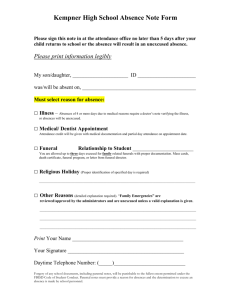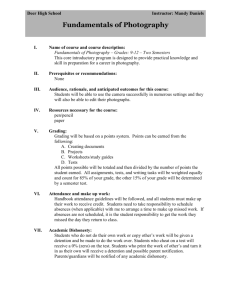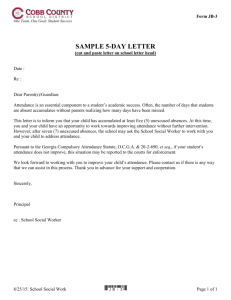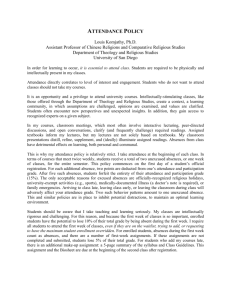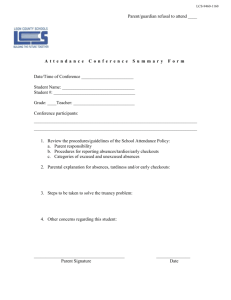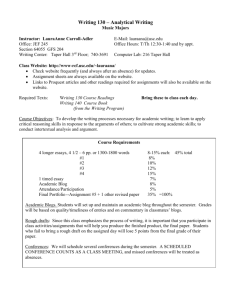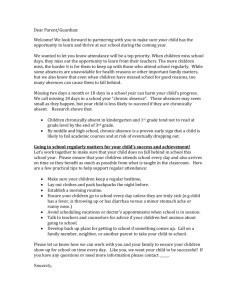Attendance Dilemma
advertisement
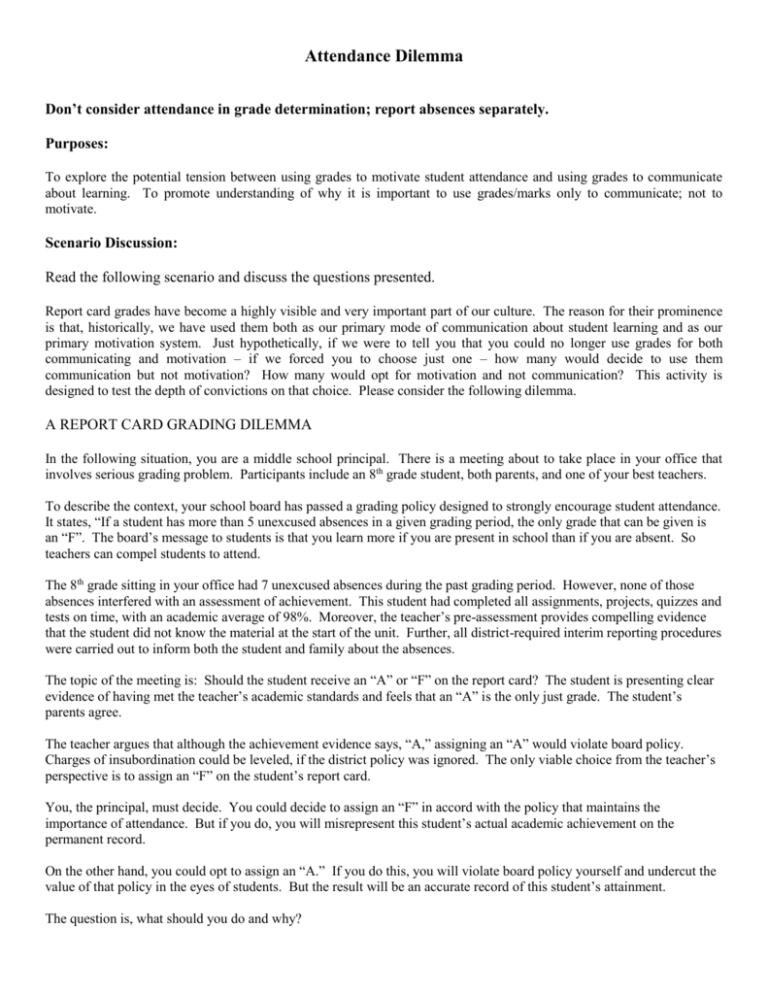
Attendance Dilemma Don’t consider attendance in grade determination; report absences separately. Purposes: To explore the potential tension between using grades to motivate student attendance and using grades to communicate about learning. To promote understanding of why it is important to use grades/marks only to communicate; not to motivate. Scenario Discussion: Read the following scenario and discuss the questions presented. Report card grades have become a highly visible and very important part of our culture. The reason for their prominence is that, historically, we have used them both as our primary mode of communication about student learning and as our primary motivation system. Just hypothetically, if we were to tell you that you could no longer use grades for both communicating and motivation – if we forced you to choose just one – how many would decide to use them communication but not motivation? How many would opt for motivation and not communication? This activity is designed to test the depth of convictions on that choice. Please consider the following dilemma. A REPORT CARD GRADING DILEMMA In the following situation, you are a middle school principal. There is a meeting about to take place in your office that involves serious grading problem. Participants include an 8th grade student, both parents, and one of your best teachers. To describe the context, your school board has passed a grading policy designed to strongly encourage student attendance. It states, “If a student has more than 5 unexcused absences in a given grading period, the only grade that can be given is an “F”. The board’s message to students is that you learn more if you are present in school than if you are absent. So teachers can compel students to attend. The 8th grade sitting in your office had 7 unexcused absences during the past grading period. However, none of those absences interfered with an assessment of achievement. This student had completed all assignments, projects, quizzes and tests on time, with an academic average of 98%. Moreover, the teacher’s pre-assessment provides compelling evidence that the student did not know the material at the start of the unit. Further, all district-required interim reporting procedures were carried out to inform both the student and family about the absences. The topic of the meeting is: Should the student receive an “A” or “F” on the report card? The student is presenting clear evidence of having met the teacher’s academic standards and feels that an “A” is the only just grade. The student’s parents agree. The teacher argues that although the achievement evidence says, “A,” assigning an “A” would violate board policy. Charges of insubordination could be leveled, if the district policy was ignored. The only viable choice from the teacher’s perspective is to assign an “F” on the student’s report card. You, the principal, must decide. You could decide to assign an “F” in accord with the policy that maintains the importance of attendance. But if you do, you will misrepresent this student’s actual academic achievement on the permanent record. On the other hand, you could opt to assign an “A.” If you do this, you will violate board policy yourself and undercut the value of that policy in the eyes of students. But the result will be an accurate record of this student’s attainment. The question is, what should you do and why?
